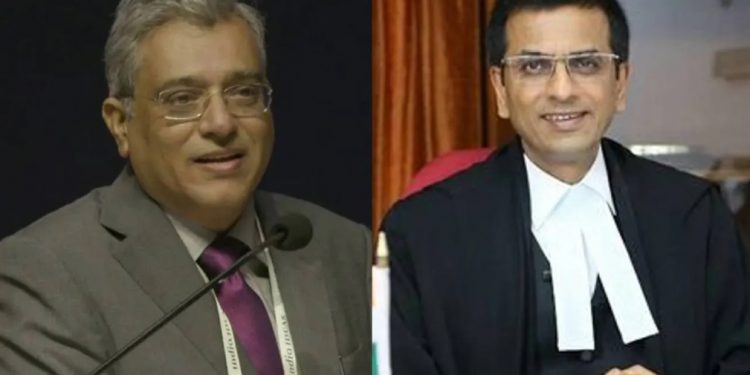New Delhi: Both the Supreme Court judges hearing the Gyanvapi mosque petition are connected to the Babri mosque case. The two-judge bench of Justices DY Chandrachud and PS Narasimha are hearing a petition that challenges filming inside the Gyanvapi Masjid in Varanasi in a case involving claims that parts of a temple are inside the mosque complex.
Five Hindu women have asked a local court to allow daily prayers before idols on its outer walls as well as other ‘visible and invisible deities within the old temple complex’.
The Supreme Court is hearing a challenge to a Varanasi court-ordered video assessment of the mosque complex, including three domes, underground basements and the pond.
Interestingly, this is the first temple-mosque case being heard by the Supreme Court since the Ayodhya verdict in 2019. Both judges have a connection with the Ram temple case.
Also read: Protect Shivling, but allow Muslims to offer Namaz in Gyanvapi mosque: Supreme Court
Justice DY Chandrachud was one of the five judges who heard the Ayodhya temple-mosque case for 40 days in 2019 before delivering a historic judgment handing over the Babri site for the building of a Ram temple and ordering alternative five-acre land for a mosque.
Justice PS Narasimha was the senior lawyer for the Hindu petitioners in the Ayodhya case. He represented Rajendra Singh, the successor of the original petitioner, Gopal Singh Visharad.
Visharad had in 1950 petitioned that he should be allowed to worship Lord Ram at his birthplace without any obstruction. He had also sought a stay order on the removal of Ram statues from the area.
Justice Narasimha, who fought the case on behalf of the petitioners, was appointed a Supreme Court judge, August 31, 2021.
Both judges, Justice Chandrachud and Justice Narasimha, are in line to become Chief Justice. Justice Chandrachud will become Chief Justice later this year, for a two-year term, and Justice Narasimha is due for the top job in 2027.






































